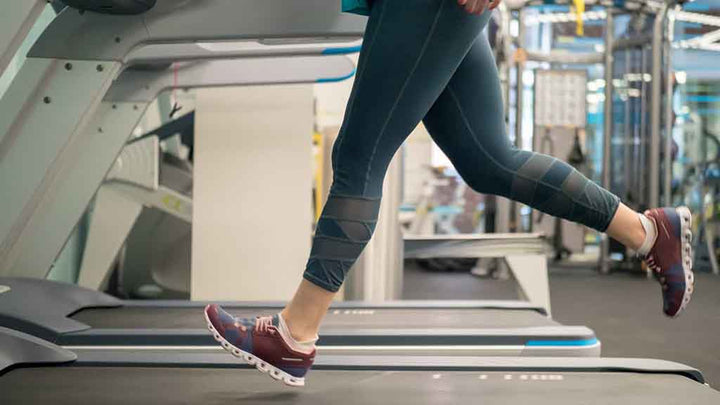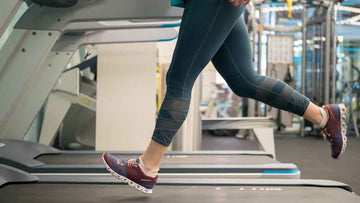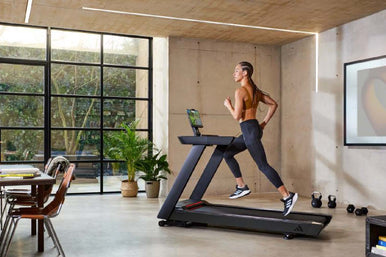

Nobody wants fitness to be boring, and the relatively recent big take up of interval training by people wanting to improve their fitness is driving that point home..
High-Intensity Interval Training (HIIT) and Low-Intensity Interval Training (LIIT) are two styles that compete for the title of best interval training. Which is best for you and why?
Today we’ll try to answer these questions and discuss how both HIIT and LIIT can fit into a treadmill workout routine that you can create to suit you.
Why interval training?
Interval training is a great way to vary your treadmill workouts and explore the unique benefits of both high- and low-intensity interval training.
What is HIIT? Why is it popular?
HIIT is a workout style alternating between “high” and “low” phases of extreme effort and then lower effort (to recover). HIIT is popular because it squeezes the benefits of a workout into a shorter space of time, keeps things interesting, and helps to improve both speed and power.
‘Low’ phases are typically the same exercise with lower intensity. For example, you’d sprint on a treadmill for 15-20 seconds then run or fast-walk for 40-45 seconds. This lets you keep effort high without too much fatigue and keeps average intensity high.
This has some interesting benefits compared to traditional ‘cardio’, which is usually higher in duration and keeps a steady pace:
- Allows you to build up athletic attributes like power and speed
- Trains in higher heart-rate zones for fitness across the whole spectrum
- Improves heart rate variability – a key health measure
- Prepares tendons and muscles for higher-effort exercise
- Improved post-exercise calorie spend (similarly to weight training)
HIIT is defined by it’s challenging pace, time-efficiency, and ability to build power and speed. It’s also quite tough on the body: workouts are short, but recovery is longer.
What is LIIT? What benefits does it offer?
LIIT is a lower-intensity approach to interval training that is becoming popular as an alternative for beginners and those looking for a lighter workout.
Where HIIT is all about maximum effort and then lower efforts, LIIT uses moderate-high effort during ‘high’ phases and then longer, lower-intensity ‘low’ intervals. For example, a 20 second 85% effort run then walking for 40-60 seconds – or simply resting.
The result is more recovery, more recovery, and a completely-recovered ‘high’ phase each time. It also opens up restorative exercises like yoga and stretching during low phases.
LIIT does sacrifice some of the training effects of HIIT: it’s less time-efficient, doesn’t produce the same athletic traits, and requires more phases and time to achieve the same physical change. In exchange, it provides a different set of benefits:
- Reduced muscle-stress and tendon-damage
- Less joint-impact due to lower speeds
- More recovery time means less fatigued-running
- More accessible with lower technical demands
- Better for lighter sessions and introduces interval training to beginners
In the simplest terms, LIIT provides gentler benefits because it is gentler. It might not have the same return on time, but you’re putting in less effort, and putting less strain on your body.
How to use interval training on a treadmill
The treadmill might rightly be viewed as the perfect interval training device. Running is an easy movement to add high and low periods to, pace is completely adjustable, and incline adds a per-stride difficulty setting for increased control over your workout..
Pace and incline can both be used to adjust the effort needed too, and combine to rapidly increase training-demand. They work for both low- and high-intensity intervals, too.
Good treadmills will typically have pre-programmed workouts that can be used for LIIT, and the cooldown function is perfect for those lower-intensity resting periods. You can even push-start a treadmill at an incline for a brutal HIIT workout if you’re feeling up for a challenge.
Structuring HIIT and LIIT workouts with a treadmill
Interval workouts give you plenty of options for structuring workouts and training smarter.
There are a few questions you need to ask yourself that make it easy to get the perfect interval training workout for your needs with just a treadmill.
LIIT isn’t better than HIIT – or the other way around – but one is likely better for your needs right now based on a few factors we’re going to look at.
1. How experienced am I?
HIIT is generally better suited to more experienced people looking to get a fast, effective, heart-pounding workout. It’s popular for its time-efficiency and it burns more calories per-minute than LIIT.
HIIT puts a serious premium on experience, prior training, and time-efficiency. It’s for anyone who would rather work harder than longer. This high demand-per-minute factor is also why it exposes you to more injury-risk and is therefore generally more suitable for experienced trainees.
LIIT is for anyone who is looking for a lighter workout – or those who need a lighter workout due to inexperience, recent return to exercise, or dealing with a new type of exercise.
The simple rule: more experience = more intensity.
2. How tired and sore am I?
HIIT is demanding, while LIIT is more restorative – especially when your low periods are mixed with stretching and light movement.
Alternating between the two or using LIIT when you’re tired is always a good strategy. Recovery is when the body gets better, muscles grow, and tendons strengthen.
LIIT brings your risk of injury down while stacking up high-fatigue sessions of HIIT can cause it to increase. Listen to your body and be willing to take one step back to take 2 steps forward. Workouts don’t always have to be super-intense and leave you exhausted for days afterwards!
3. How to use intervals for endurance training
You can use interval training to break up ‘normal’ cardio training like long runs on the treadmill.
HIIT works to increase overall training intensity, practicing speed, and preparing the muscles and tendons for higher force output. It also improves muscular endurance, heart rate variability, and helps with sprint performance.
LIIT can be used to recover from long runs, HIIT training, or as a way of recovering after high-mileage weeks. It can be used by itself as a workout structure (and rotated in/out in a training week) or used as a dedicated low-stress workout.
Intervals are a great way to work through harder and easier sessions, adding more “gears” to your treadmill workouts.
How to progress HIIT and LIIT workouts
Interval training workouts should be designed to get more “high” phase time in, and accumulate those minutes over time. Progress will come from two sources:
- More ‘high’ phases (either from shorter rest or more ‘rounds’ in total)
- A higher pace on either high or low phases – or both
HIIT workouts require a strong warm-up with dynamic exercise to keep joints healthy and prepare for high-speed loading. LIIT also requires a good warm-up but with more room for error since the actual workouts aren’t as demanding.
The key is to progress weekly total work, patiently, over time.
Final thoughts
If you have a treadmill, you can experiment with both HIIT and LIIT in the comfort of your own home. These are both effective training methods but they have completely different goals and demands. What matters is making sure that you’re using a suitable pace and workouts for your needs.
HIIT is about pushing the pace and getting to maximal effort again and again. LIIT is about bringing that intensity level down and making sure that your body is fully recovered between moderate-high effort bouts and giving yourself the time to recover.
They don’t need to compete but rather they should fit into your workout plan at the right time to maximise the benefits. Use HIIT to prepare for high-force stress and LIIT to lower those demands and give yourself time to adapt.
To take a look at our full product range, check out our store. Or for more expert exercise information, check out our features hub.


